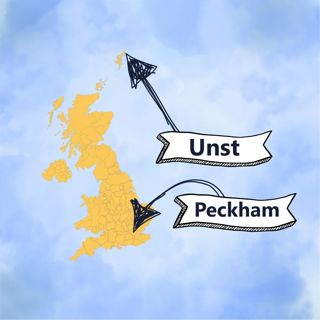Space to Learn Celebration: bringing space education excitement to Peckham
- 11th Jun 2025
As part of our Space to Learn Celebration, which runs throughout June, General Manager David Wilkinson shares his experiences delivering masterclasses to students in London...
The Space to Learn project ran from January 2023 to March 2025; it was a long and rewarding journey, and also one that was at its busiest in the final few weeks. A combination of the looming end of the free provision it provided, along with a desire to make sure we smashed our targets, meant that the whole Academy staff were busy. While half the team went on its epic journey north to deliver a space camp in the distant islands of Shetland, my colleague Peter and I set our sights on south London and the district of Peckham. It is difficult to imagine two more contrasting locations; rurality vs city living, numbers of people, ethnic mixes, and life experience of those living there.

The previous day had started with me giving careers presentations to our Space Engineers in Loughborough, before trotting down to the Royal Society in central London for a UK Space Agency Space Inspirations celebration event (I said it was busy time…). Over drinks, I had a great conversation with Debbie Strang, who is the co-owner of SaxaVord Spaceport. That's on the island of Unst, which is where our Shetland Space Camp was taking place, with support from SaxaVord staff. Small world! After we were done I took a train down to Peckham (the tube doesn’t go much south of the River Thames – something to do with clay I believe, but that’s for another time) where I met Peter at our hotel. I am grateful to him for having volunteered to drive all our kit down from Leicester.
Looking out of the window at the big, red buses streaming by, I was messaging the team in Shetland and we reflected on our very different locations. This is what the Space to Learn programme was all about: amazing space-related experiences for everyone, no matter the challenges of geography, funding or any other barrier. We were in Peckham at the invitation of Harris Federation, which ran several schools across South London – all of which were going to be sending students to the event.
We got up bright and early the next morning and, clutching our “breakfast boxes” from the hotel, made our way down the high street to the Harris Academy. The first surprise of the day was being told that the event had come close to being cancelled. OFSTED had been inspecting the school and had unexpectedly decided to stay on site for additional time. Fortunately, the organisers had made the case to the principal that this kind of curriculum enrichment would hardly put the school in bad light, so we were on! Amongst the equipment I had was a blowtorch, which I’d be using to demonstrate the thermal properties of a space shuttle heat tile (actually a Soviet one from the Boran shuttle). They hadn’t been able to deactivate the smoke detector in the lab, so I had to do it right next to an open window to make sure that we didn’t create an evacuation incident. The demonstration, thankfully, went without a hitch!
The format of the day was an hour-long masterclass with me, then one with Peter (or vice versa), followed by a presentation on all the ways space can help to fix the world. Then in the afternoon we did it all again with a second set of students. Around 120 students had over two and a half hours experience with us. That is a long time to ask for anyone’s attention, let alone a bunch of year 8s, but they gave it. The behaviour, interest, engagement and knowledge of the students were exemplary. They responded to questions, asked questions of their own and showed interest and enthusiasm. They fully participated and appeared to enjoy the experiments we asked them to carry out. Putting on the space helmet and even a pressure suit was as much fun as it usually is.
The event was organised as a collaboration between the school's science and design and technology departments, so we had been asked to include some material on how things are engineered for space. In my class, we looked at all the different layers of a space suit. We explored what their functions are – how they solve the problems encountered in a space environment. We also looked at the engineering problems to which the answer was the Boran shuttle tile (as referred to earlier). A real measure of the students’ engagement was that after two hour-long lessons and a 45-minute presentation, they were still asking questions. Lots of questions. In the end the teachers had to intervene and end things!
I hope we convinced some of these young people to look into careers in the space sector. At the very least, I am sure that we reinforced the idea that STEM subjects are exciting and interesting and could provide secure futures for anyone.
I’d like to thank Sabrina, Lucy and Jonathan from the Harris Academy/Federation for arranging everything at their end, and also my colleague Peter who, after a full day’s delivery, then drove us back through central London and up the M1.
The one thing I’ll leave with is a girl who made a lasting impression on me. As we were walking from the labs to the assembly hall, she told me all about her love of mathematics. The GCSE level work she was already tackling, and her firm intention to go to Oxford to study astrophysics. Having briefly experienced her intellect, enthusiasm, personality and work ethic, I am firmly convinced she’ll make it. What can I say? The girl loves space!
Learn more about us
Just click any of the links to discover more about what the National Space Academy does, across the UK and worldwide.


